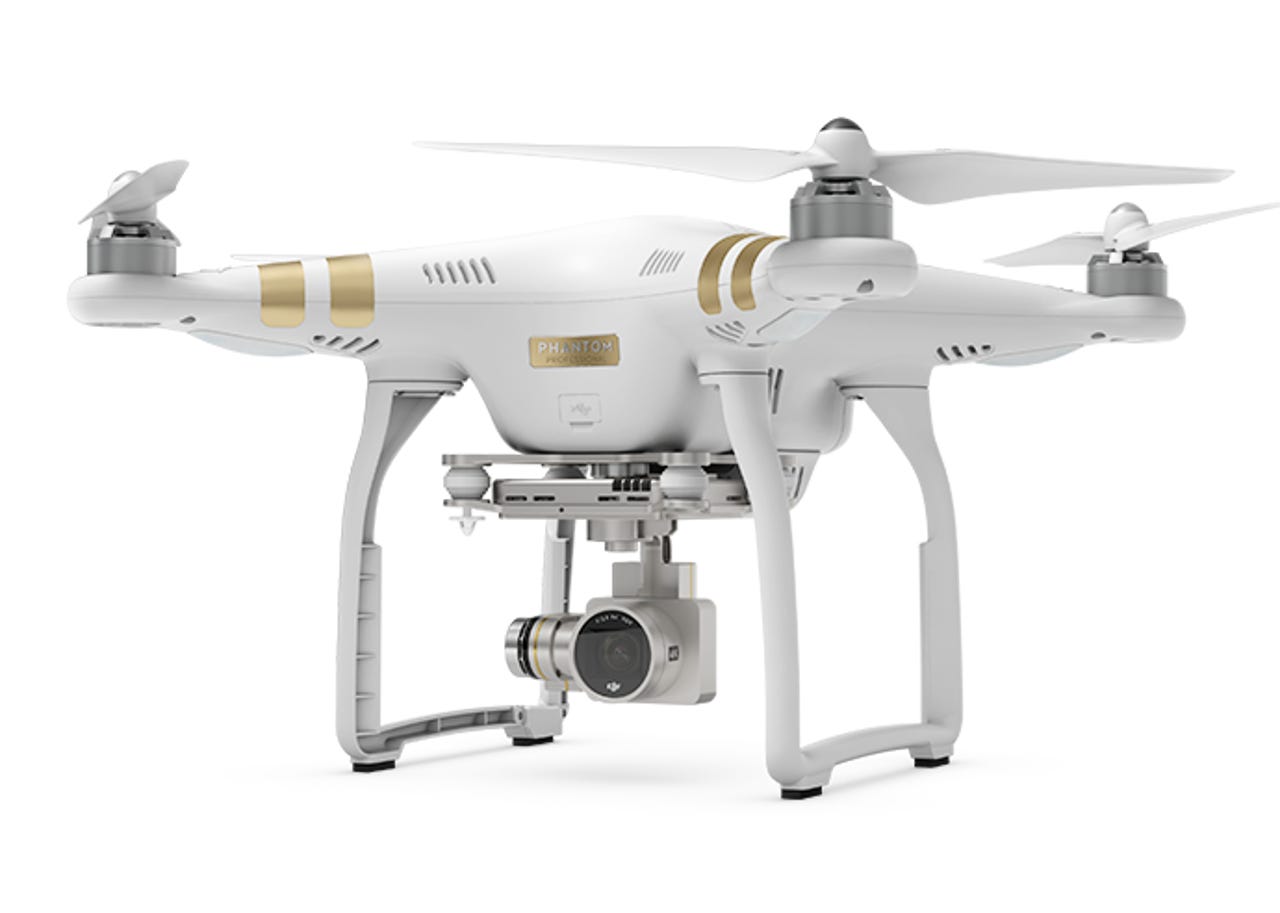New Phantom 3 sets a higher bar for consumer drones


The run-in was fortuitous. DJI's next offering in the Phantom line is due out later this month and is available for pre-order now, and judging from the tricked out Ram 1500 the contractor was driving, he strikes me as the kind of guy who's always eager to upgrade. So, Steve, this preview is for you.
The Phantom 3 shares the familiar compact form-factor that's helped make previous generations so popular. Decked out in Storm Trooper white, it's small enough to store in a pack and light enough to catch-land, for those bold enough to risk an unpleasant propeller thwack.
The biggest upgrade is the camera, which is good news for filmmakers. There are two camera systems available. The "Professional" model shoots in 4K at 23, 24, or 30 frames per second. That higher resolution allows ample room for cropping while maintaining HD resolution, an important consideration when filming from a moving platform. The "Advanced" model captures 1080p at 60 frames per second. Both cameras use a 1/2.3-inch sensor, which is the same size used in the much pricier DJI Inspire. The new model allows you to live stream video to YouTube, which may come in handy for journalists. The field of view on the new cameras has been narrowed to 90 degrees to avoid distortion at the corners of the frame, which had to be corrected in editing when shooting with previous Phantom cameras.Robotics
A three-axis stabilizing gimbal holds the camera in place and automatically corrects for bumps and unwanted flight movement to maintain smooth video. This will be familiar to Phantom 2 Vision+ users. The fixed lens camera is permanently fixed to the gimbal and can't be swapped out, a cause for some grumbling in photography forums but a forgivable constraint given the touchy dynamics of quadcopter flight and the importance of weight and balance in designing a control system.
The new model uses both GPS and GLONASS, the Russian positioning system, to provide superior location awareness and accuracy and to reduce the likelihood of losing a positioning lock, which may cause fly-aways. The quadcopter can take off automatically and will return to the operator if it loses contact with the controller for any reason or if it's about to run out of batteries. Fly time with the upgraded battery is estimated at 23 minutes, depending on conditions.
One of the most appealing improvements to the Phantom 3 is the addition of a ground-scanning sensor, which allows for precise indoor flight. For filmmakers, that means the ability to rig inventive shots without having to worry so much about the quadcopter colliding with walls or a chandelier.
One feature the Phantom 3 lacks, however, is dual control capability, which enables a dedicated operator to man the camera while the pilot focuses on flying the aircraft. That option is available on the more expensive Inspire, which you can find for $2899. At a price of $999 for the Advanced and $1250 for the Professional, though, the Phantom 3 is the most drone you'll find for your money, and it's the best option out there for professional and amateur filmmakers on a budget.
And for savvy L.A. contractors. See you out there, Steve.